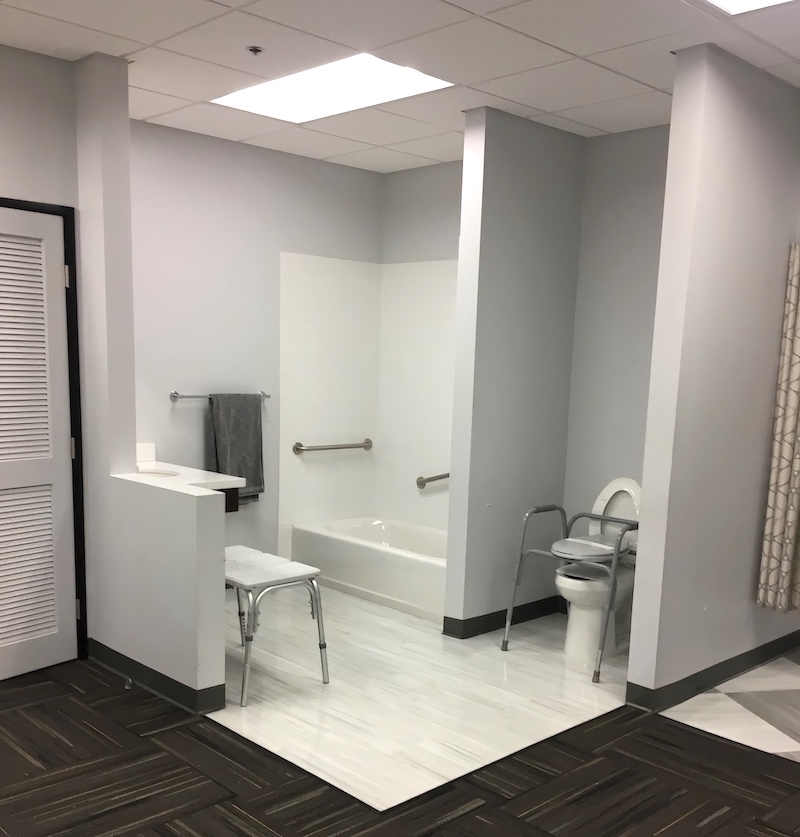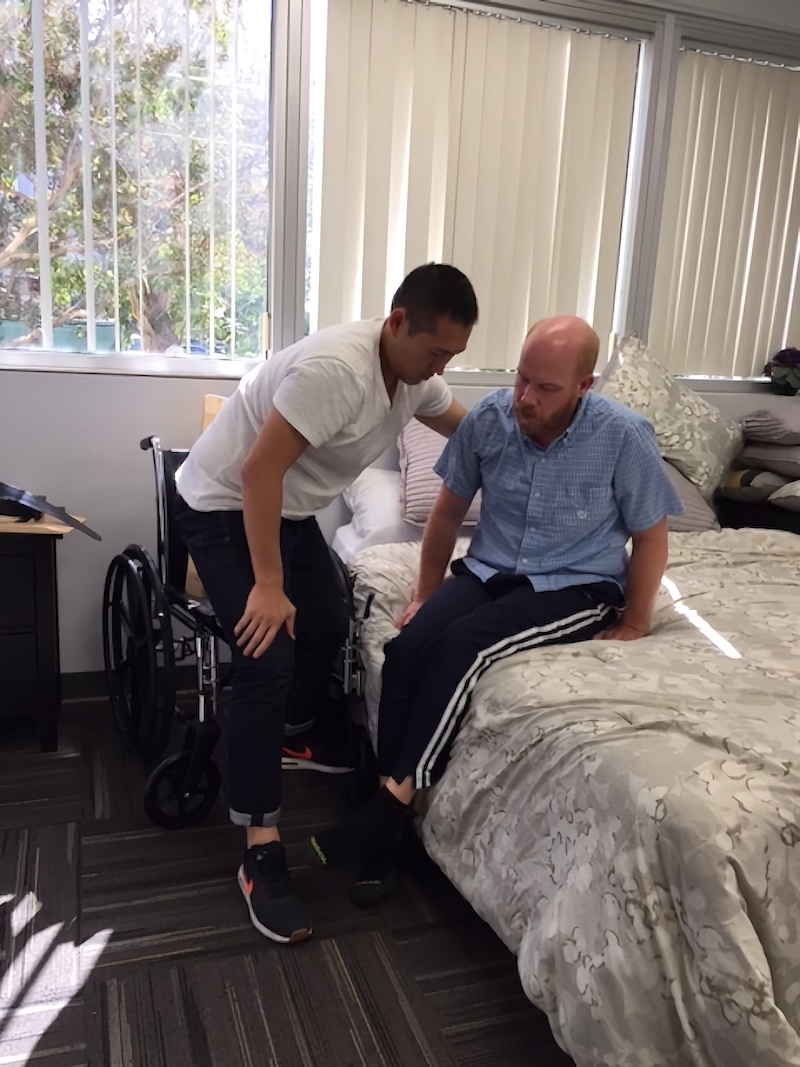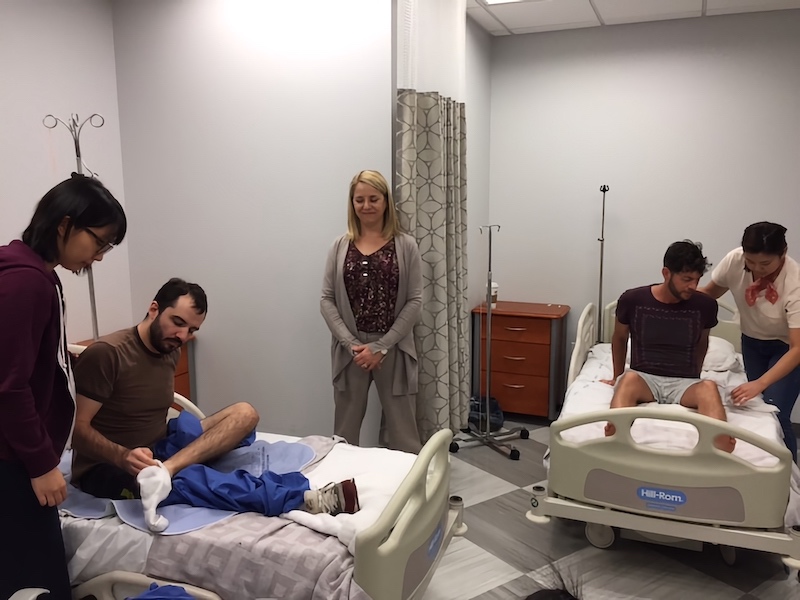Standardized Patients: the Good, the Bad, and Becoming the Hulk

October 6, 2017
by Erika
One of the best opportunities our program offers is the chance to practice transfers with standardized patients in our Adult Rehab immersion.
What’s a standardized patient?
It’s a person carefully recruited and trained to take on the characteristics of a real patient providing students with the opportunity to learn skills in a simulated clinical environment. Neat, right?
So far in my adult rehab immersion, we’ve practiced with standardized patients “recovering from hip replacements, back injuries, and stroke.” We’ve learned how to transfer them from laying in bed to sitting then to a wheelchair or walker! From there, we’ve also practiced how to mobilize and transfer these patients to the shower, tub, and toilet.
It’s been ADLmania!!!
Our Adult Rehab lab was designed to simulate common practice locations where we would actually conduct transfers and treatment sessions. On one side, we have an exact replica of what a hospital room looks like at Keck Medical center — from the beds to the toilet and shower. On the other side, we have a standard bedroom with access to a tub and toilet. Lastly, we have a fully functioning kitchen where we can practice various occupations like meal prepping, washing dishes, and cooking. What’s better than practicing real life occupations in a real life setting?



Readers, can I just say, the first time I practiced with standardized patients, I. Was. Terrified.
“I have NO clue what I’m doing. Are they going to be nice? Are they going to be painfully dramatic? Am I going to drop someone and break their hip a second time?”
My stream of consciousness spiraled into the dark depths of the unknown but of course, with all new experiences, it wasn’t as bad as I thought it was going to be.
Sure, I think all of us students will admit that the first time, there was a lot of “uhhhhh . . .”s, big perplexed eyes, and unnecessary overexplanations of the protocol running through our heads and out our mouths. After that though, you realize that the standardized patients aren’t there to give you a hard time or to give Oscar-worthy dramatic performances but are there for you and your learning experience. While at times, they were committed to simulating pain (which was intimidating at first), they were incredibly kind and open to providing feedback on why they felt pain or felt discomfort. They were gracious in giving us as many opportunities to try again to make sure we get a specific transfer or handling right.


At the end of the day, that’s what makes the opportunity of practicing with standardized patients valuable — it gives us the opportunity to spiral into our own fears then build ourselves back up with the support and feedback of our professors and standardized patients to reveal our own capabilities and strengths — all within a safe learning environment!
I want to close with some advice I was given while working with a standardized patient named Mel*. After I had transferred him, he looked me straight in the eye and said, “You have to commit. If you don’t commit, I won’t commit.” I’m not sure if this was a reflection of his practices as a method actor, but it completely changed how I transferred after that point. I became more confident. You know when Bruce Banner becomes the Hulk? It was like that without all the rage. Mel’s words transformed my identity from being a timid inexperienced OT student to a potentially strong, capable, and committed OT practitioner. Thanks Mel.
*All names mentioned in this blogpost are pseudonyms.
⋯
Next by tag Classes ⟩ What are OS/OT? ⟩
⋯





